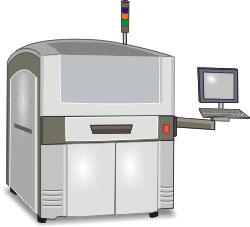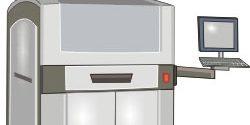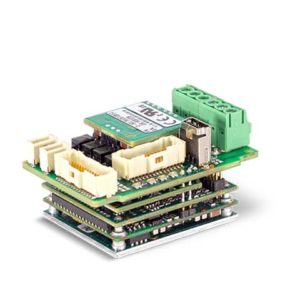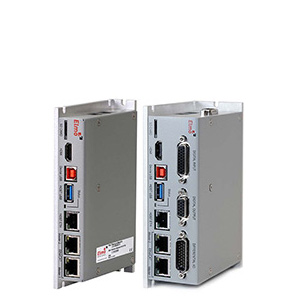Background
Printed Circuit Boards (PCBs) are used in virtually every electronic device today, from cellular phones and personal computers to industrial and medical machinery. The electronics industry used to be able to keep prices low by working in high volume with minimal variation. But, in today’s PCB market, with the increasing demand for highly customized products and technology changing at a breakneck pace, low volume and high variation are now the norm. The companies that manufacture PCB printing machines must build flexibility into all aspects of the production process. Allowing the flexibility to adjust production as materials and components change greatly increases the complexity of the servo motion systems that power the PCB printing machines.
Read this case study to learn about:
- Combining intelligent servo drives with EtherCAT architecture to simplify wiring and increase throughput
- The advantage of implementing a small drive nearby the motor
- Real time trajectory motion enabled by sophisticated motion controller

Machine Requirements
A North American PCB screen printer manufacturer wanted to develop a high-performance, highly flexible machine to apply solder to electrical circuits on a substrate. In the machine architecture, there were two motion subsystems, one for applying the solder to the substrate and the other for visual quality inspection. The systems had to work independently within the machine, providing a combined solution for high performance production runs of all sizes, from small to very large.
Previously, a centralized controller with a PC front-end was used to interface with I/O, pneumatics and the motion system. This put the burden of the machine control system on a single processing system through which all devices received commands and reported back status (feedback position, sensor state, etc.). The company wanted to develop a machine design that provided a network for hundreds of I/Os and 10+ servo motion axes and that enabled deterministic communications between the devices and a host computer. They chose EtherCAT for the communication architecture, due to its advantages in reliability and performance. The EtherCAT control architecture, using Platinum Maestro controller, reduced the burden on the machine control system by distributing the intelligence throughout the machine.
The company now needed a motion solution that could drive both rotary and linear motors in a small space and with less wiring, for easier assembly. They also needed connectivity via EoE (Ethernet over EtherCAT) and high performance that would ensure the machine’s competitiveness in electronics assembly market.
Motion Control Solution
- Gold Solo Twitter servo drives
- Platinum Maestro (P-MAS) motion controller
The company selected Elmo’s intelligent Gold Solo Twitter servo drives, as they enabled them to maintain the former PC-based machine control platform while adding real-time control via Elmo’s advanced multi-axis motion controller Platinum Maestro.
The Gold Solo Twitter servo drives were placed adjacent to the moving axis, eliminating the need for a centralized control cabinet and simplifying wiring. DC power is now run to the servo drives and feedback wiring is run from the motor to the drive. The wiring back to a centralized control was replaced with a simple cable that is daisy-chained between the different intelligent nodes back to the P-MAS, which in turn connects to the PC.
In this application, the host sends the motion trajectories to the drives. The intelligent Gold Solo Twitter drives interpret the trajectories and drive the motors accordingly. The drives also run supervisory monitoring programs and can execute a programmed script stored in flash memory.
Results
Gold Solo Twitter
Servo Drive, Up to 80A/80V, 70A/100V, 30A/200V
Platinum Maestro
High Precision Ethercat Muilti-Axis Motion Controller
For More Information



